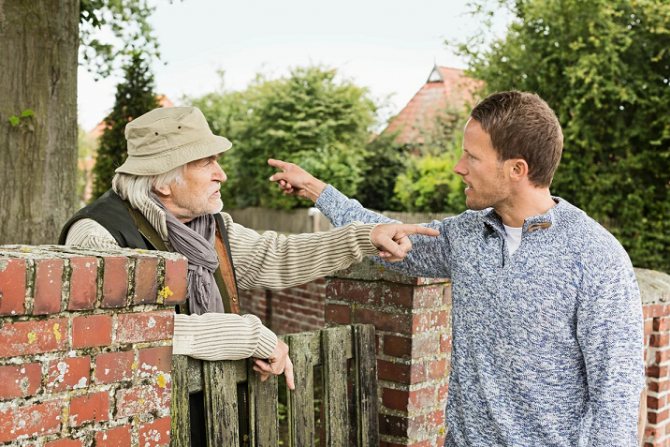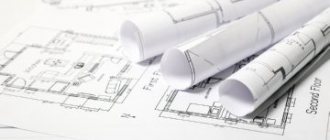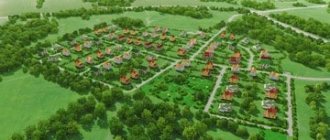First, let’s clarify how the land can be used:
- IZHS – individual housing construction;
- Gardening and horticulture;
- Introduction of personal farming;
To understand whether you can get a plot of land, let’s pay attention to the category of citizens who can safely apply for such government assistance:
- Participants in combat operations: nuclear power plant liquidators, veterans, as well as their families;
- Military personnel, those who have been wounded or missing, and their families;
- A citizen who has awards;
- Families with healthy, sick and adopted children;
- Orphans;
- Persons who have a confirmed disability;
- People who work in the field of medicine, agriculture;
- Single-parent families with parents under the age of 35.
- Those who need improved living conditions;
- Persons who are registered as needing improved living conditions.
IMPORTANT! Before applying for a free plot, pay attention to the above category of persons.
What should you pay attention to when choosing a site?
Location
This criterion plays an important role in determining the place of residence. Consider the time it will take to get to work and still have time to get your child to kindergarten or school. Also pay attention to the following points:
- Transport accessibility. What types of transport are in close proximity to the site? How does highway congestion change on weekdays and weekends? Is there public transport, how often does it run and how useful is it for you?
- Commercial infrastructure. Where are the shops, supermarkets, pharmacy, ATM, etc.? In what mode do they work?
- Social infrastructure. How far away is the clinic, hospital, fire station and police? How long will it take for an ambulance, police car or fire truck to get to the station? Is there a postman or post office? Is it possible to connect to broadband internet? How well does mobile communication work?
Also find out whether there are hazardous industries, railroad tracks, an airport, noisy highways, or landfills nearby. Each of these factors can reduce the cost of the site.
Driveways
When you go to a place, familiarize yourself with the site, pay attention to the access roads to it.
Find answers to the following questions:
- Which road leads to the site? If it’s bad, find out from the realtor whether and when a new road is planned to be laid.
- Are there dams and bridges along the way to the site? If they rise above the river by no more than 2 m, in the spring you may encounter the problem of a flooded river, which will not allow you to drive along this road and you will have to spend a lot of time driving around this area and getting to the desired place.
- Who clears the road of snow? Find out from the residents at whose expense the snow that falls in winter is removed. There are two options: municipal authorities do the cleaning, or residents chip in to help clean up. In the second case, you should take into account the costs of solving this problem when purchasing a plot.
- Will a long truck be able to drive up to the site without creating obstacles for neighbors? If there is no normal access road, ask the professionals what the cost of organizing access roads during the construction process is.
Communications
The comfort of living in a house largely depends on the availability of modern communications. These include electricity, gas, water supply, sewerage. The most global and important are the first two.
- See if there are electric poles near the site? Find out if your neighbors have electricity? If all this is available, the issue of connecting electricity is practically resolved.
- Ask your neighbors or realtor where the water comes from? It can be pumped from a well on the site or come from the central water supply. The sewerage system can also be made in the form of a septic tank or connected to a common system. The choice of one option or another will depend on the cost of installing the systems and their availability. In some cases, connecting to a water supply will be cheaper than drilling your own well.
- Is it possible to connect to gas supply? Find out in advance whether your neighbors use gas. If yes, you can easily bring it into your home, but if not, find out the possibility and cost of bringing it in. When building an energy-passive house, gas will not be needed.
Presence of trees and buildings
If the area is dense with trees and there are any buildings, you may have to spend money on their removal. Dismantling buildings and cutting down trees, as well as removal and disposal, is not a cheap job. As a company, we really love areas with trees and natural vegetation (within reasonable limits) and believe that it should be preserved to the maximum, and the house should be designed to suit the site.
Neighbours
Try to find out as much as possible about your neighbors. A bad neighbor can ruin your life: in some cases, the situation gets so bad that you have to sell the land with your dream home.
- Pay attention to what house they live in and what car they drive. The higher the income, the better the neighbors.
- Find out if they have livestock, the unpleasant odor from which can permanently settle in your home.
- Get to know your neighbors, and during the conversation, find out what they do.
- Problems can also arise if the neighboring house is rented out for noisy parties.

Groundwater and soil type
The design features of the foundation, as well as the strength and reliability of the house and outbuildings, largely depend on the type of soil and groundwater level. You should also consider the following tips:
- You should not build a basement floor if the ground level is higher than 2 m - its construction will require huge financial investments.
- If the groundwater level is below 25 m, the construction of an individual well with clean water is impossible.
- If it turns out that there is bulk or peat soil on the site, it is better to refuse to purchase it, since any structures will not be very stable and will quickly collapse.
Documentation
In addition to the above, you should check the availability and contents of documents for the plot that you plan to purchase to build your own home. Please note that the area:
- was registered in the cadastral register;
- did not have border crossings with neighboring areas;
- had no encumbrances or arrests.
In addition, you should find out what the possible risks are when purchasing. Experienced realtors will help with solving this problem, and we will help with building a house.
If it turns out that the land you like (or is accessible to your wallet) has an irregular, complex shape, is very narrow (see house designs for narrow plots), or has a strong slope (see house designs on a slope) - do not be upset. This flaw can become your best advantage. We will simply design an original, comfortable house for the plot.
SIZE MATTERS

That is, if you plan to build a house with a foundation size of, say, 10x10 m, then the optimal size of your plot is 10 acres.
Accordingly, a small house 7x8 m “requires” a plot of 6 acres and so on.
Before buying a plot, you should make sure that you can, without violating building codes, place on it everything that you actually want to have in your small estate - a house, a bathhouse, a swimming pool, a garage, a garden, a lawn, guest parking, etc. .d.
Having a small plot of land, you do not need to invest significant funds in its arrangement and landscaping. And much less effort will be required during the care process.
You don’t have to worry about how to successfully arrange outbuildings and a garage - they themselves fit compactly into the shape of the site.
The use of zoning, plants and various architectural forms will most likely provide the owner of a small plot with comfort and the necessary privacy.
At the same time, one cannot but take into account the limited choice of buildings - a small space dictates its own laws.
It will also be necessary to think carefully about the issue of a place to store household items - the solution to the problem is the ground floor or an extension to the house.
Large plot: prepare to find a gardener

The owner of a large plot of land can feel like he comes from a noble family - any project has a decent area for implementation. You can not only successfully place a house on the site, but also many useful structures, including a pond, sports ground, court, swimming pool, lawn, garden and even a stable. You can live on such a vast territory with maximum comfort and scope!
Although the potential owner of a large estate may be puzzled by the difficulties associated with the exploitation of land property. A large area must be maintained in order (maintenance of fences, gardens, buildings) - and this means considerable expenditure not only of finances, but also of free time. Not everyone has the luxury of a gardener.

The lawn definitely needs to be mowed weekly, not to mention everything else.
However, all the difficulties can be looked at differently - the problem of lawn care ends with the purchase of a lawn mower or the use of the services of a Village maintenance company.
You can also turn most of the territory into a forest park, then you won’t have to worry about an unkempt plot of land.
In addition, do not forget that buying land is a profitable investment.
If you wish, you can sell it in parts in the future, leaving behind the already developed part of the site. True, such plans must be taken into account initially when planning the site.










